Visual merchandising is a powerful tool for any retail store, especially for wholesalers and boutique shops. It involves the strategic arrangement of products to capture the attention of customers. The right display can boost sales and create an unforgettable shopping experience. In this article, I’ll dive into the key elements of Visual Merchandising, from the role of lighting and color to product placement and signage. Understanding how these components work together can help your store create a more engaging environment, which is essential for attracting customers and driving purchases. Whether you’re in the USA, Sweden, Australia, or elsewhere, applying these visual merchandising principles will help you stand out in a competitive market. Join me as I explore how to maximize your retail space through these simple but powerful techniques.
Table of Contents
ToggleWhat is Visual Merchandising?
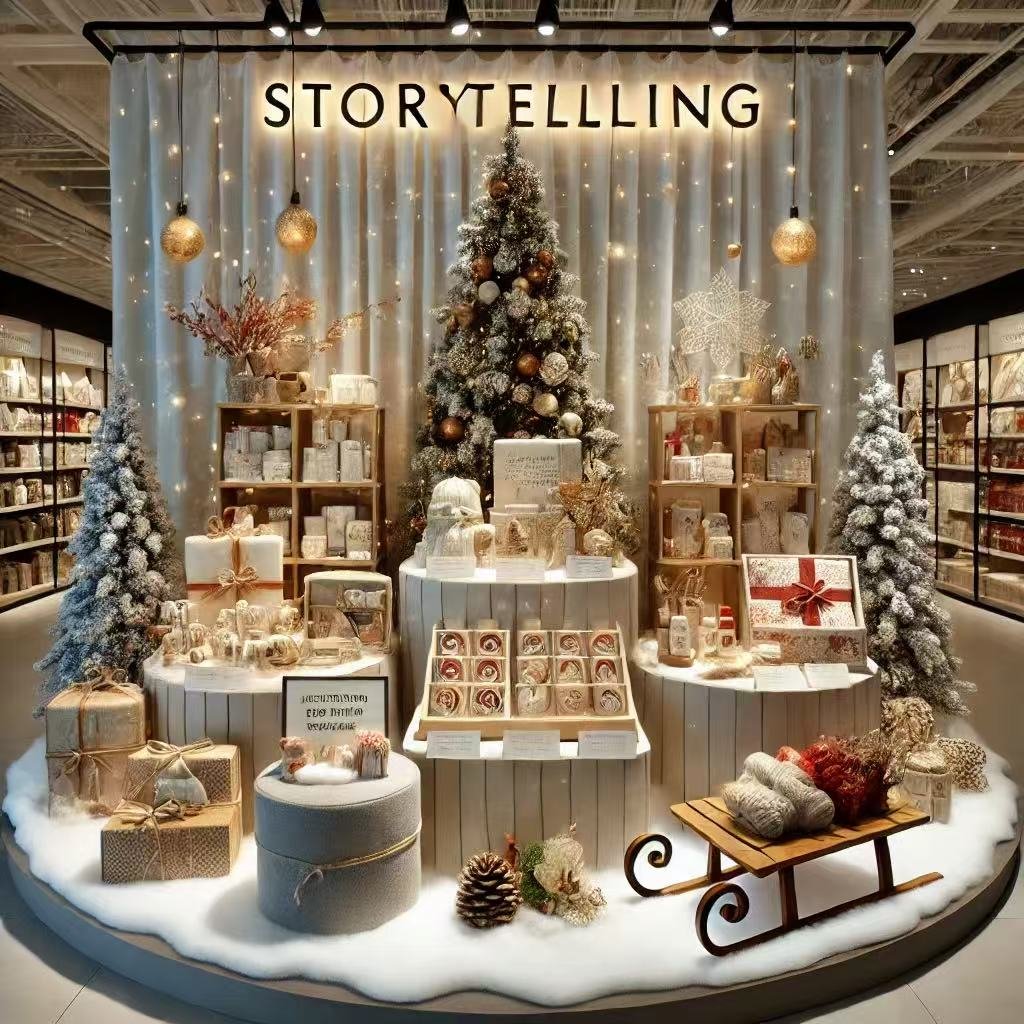
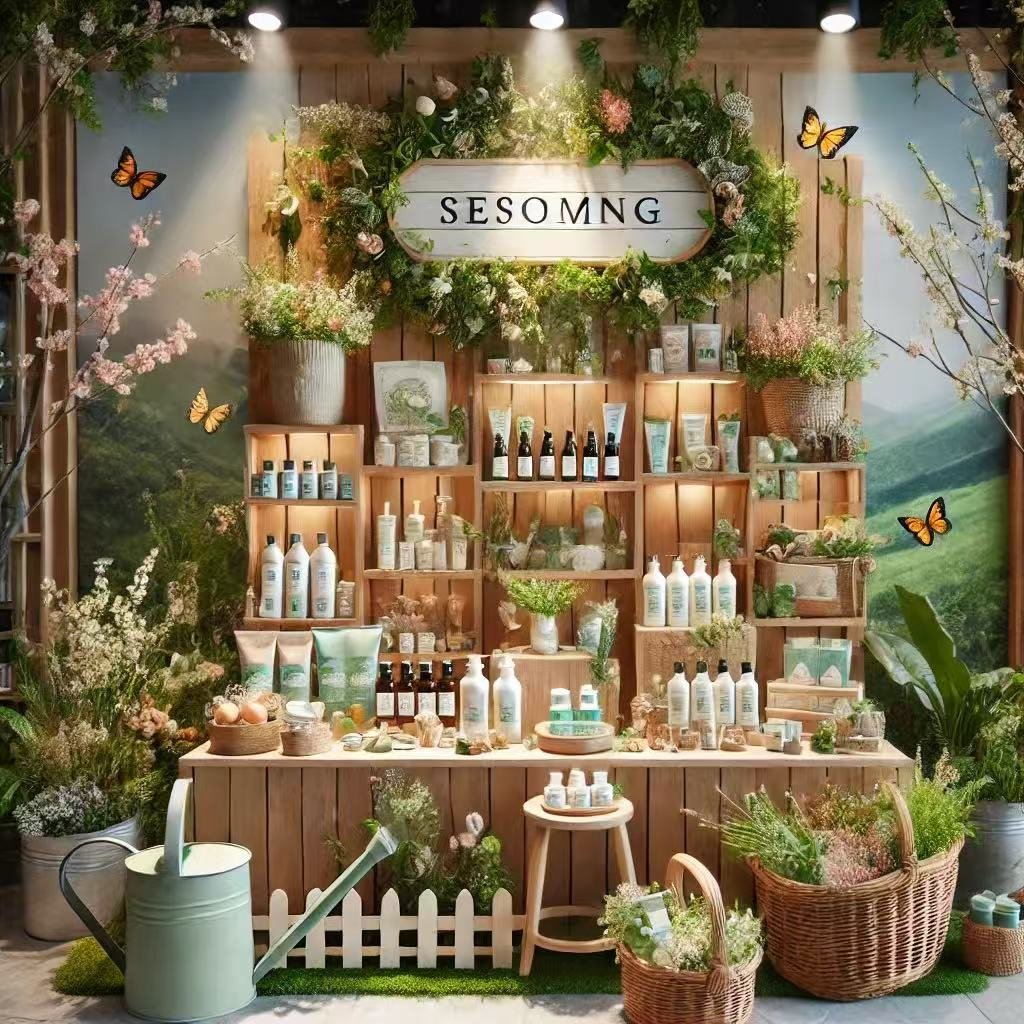
Visual merchandising is more than just arranging products neatly on a shelf. It’s the art of creating an environment that engages customers and encourages them to buy. It’s about using design elements, lighting, colors, and even textures to create an appealing and functional space. For wholesalers like us at Fairwill Display, it’s crucial to understand how effective visual merchandising strategies can be implemented to showcase products—especially store fixtures such as glass showcases, slatwall merchandisers, and checkout counters.
The concept of visual merchandising has evolved with changing customer preferences, technological advancements, and retail trends. It is no longer just about putting items on display. Today, it involves creating a complete shopping experience that attracts customers, drives them through the store, and guides them toward making a purchase. This is particularly true for our customers in wholesale and retail businesses, where the aim is to display products and sell them efficiently.
The Evolution of Visual Merchandising
The roots of visual merchandising date back to the early days of retail, where stores used simple arrangements to catch the attention of passersby. Over the years, as retail spaces became more competitive, the techniques evolved into a more sophisticated form of marketing. Store owners began to understand the importance of displays in communicating with customers. Now, visual merchandising is recognized as a key aspect of store design, influencing consumer behavior and shaping how products are perceived.
With the rise of e-commerce, brick-and-mortar stores faced a new challenge: how to remain relevant and attract customers who could shop from the comfort of their homes. In response, visual merchandising became even more critical. Retailers realized that their physical space could not only showcase products but also enhance the shopping experience in a way that online shopping couldn’t replicate. From the strategic use of lighting to interactive displays, visual merchandising has become a vital tool for creating an environment that keeps customers coming back.
Key Elements of Visual Merchandising
Several components make up a successful visual merchandising strategy. Let’s break them down.
Store Layout
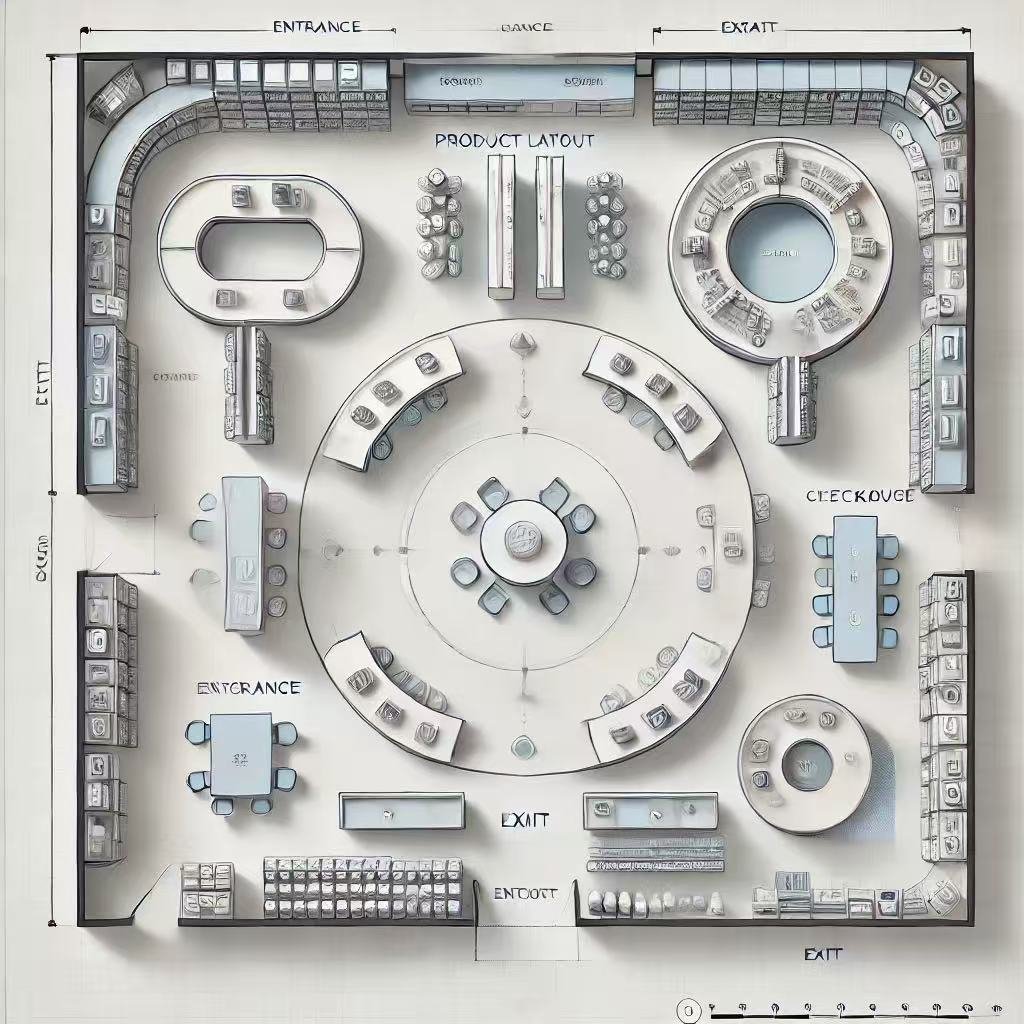
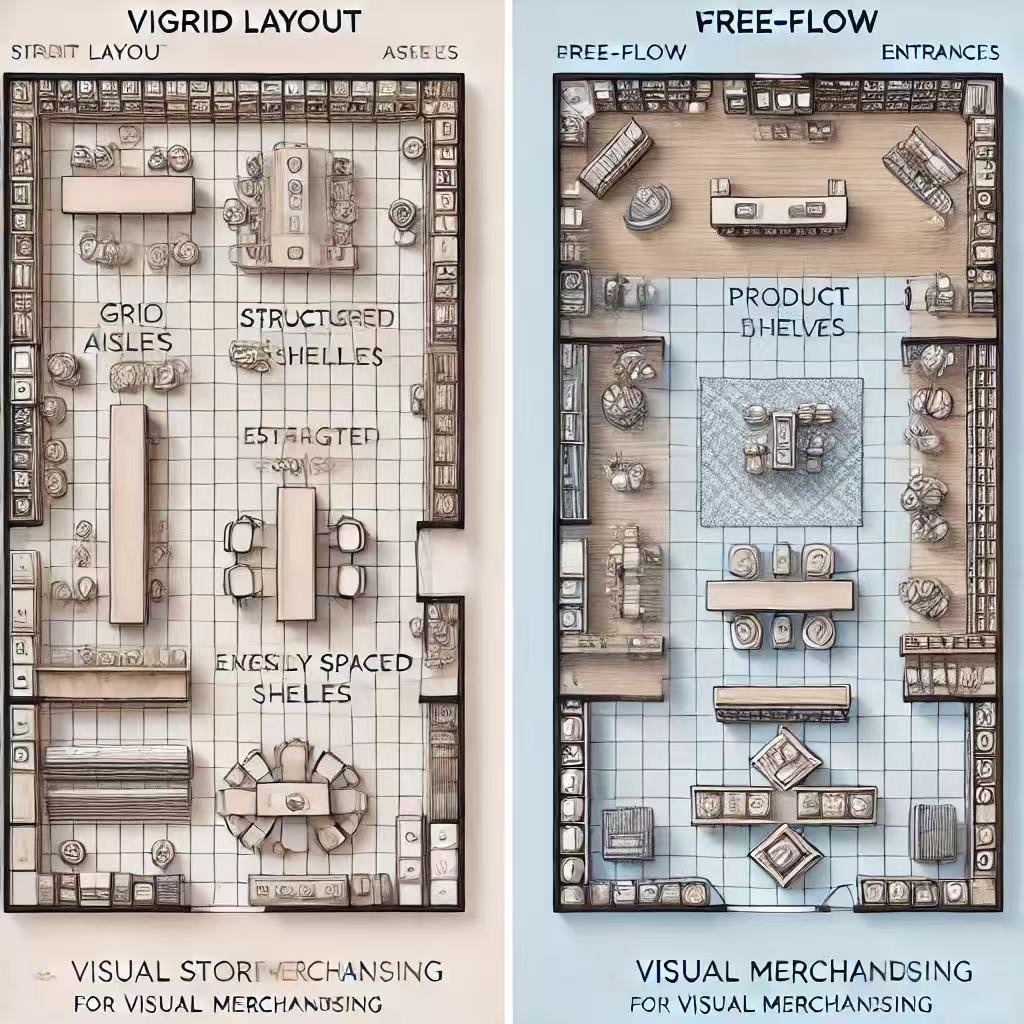
The layout of a store plays a pivotal role in how customers navigate the space. An organized, intuitive layout makes the shopping experience smooth and enjoyable. Customers should feel like they are being guided from one section of the store to the next, leading them naturally to the products you want to highlight. Whether it’s using aisles, sections, or display walls, a well-planned layout can boost the effectiveness of your visual merchandising efforts.
For example, at Fairwill Display, our slatwall merchandisers can help store owners arrange products systematically while offering flexibility to create different sections or aisles. This allows customers to explore the store more freely, helping them find what they are looking for with ease. The store layout should be planned with the target customer in mind—making it convenient, intuitive, and attractive.
Lighting: Setting the Mood
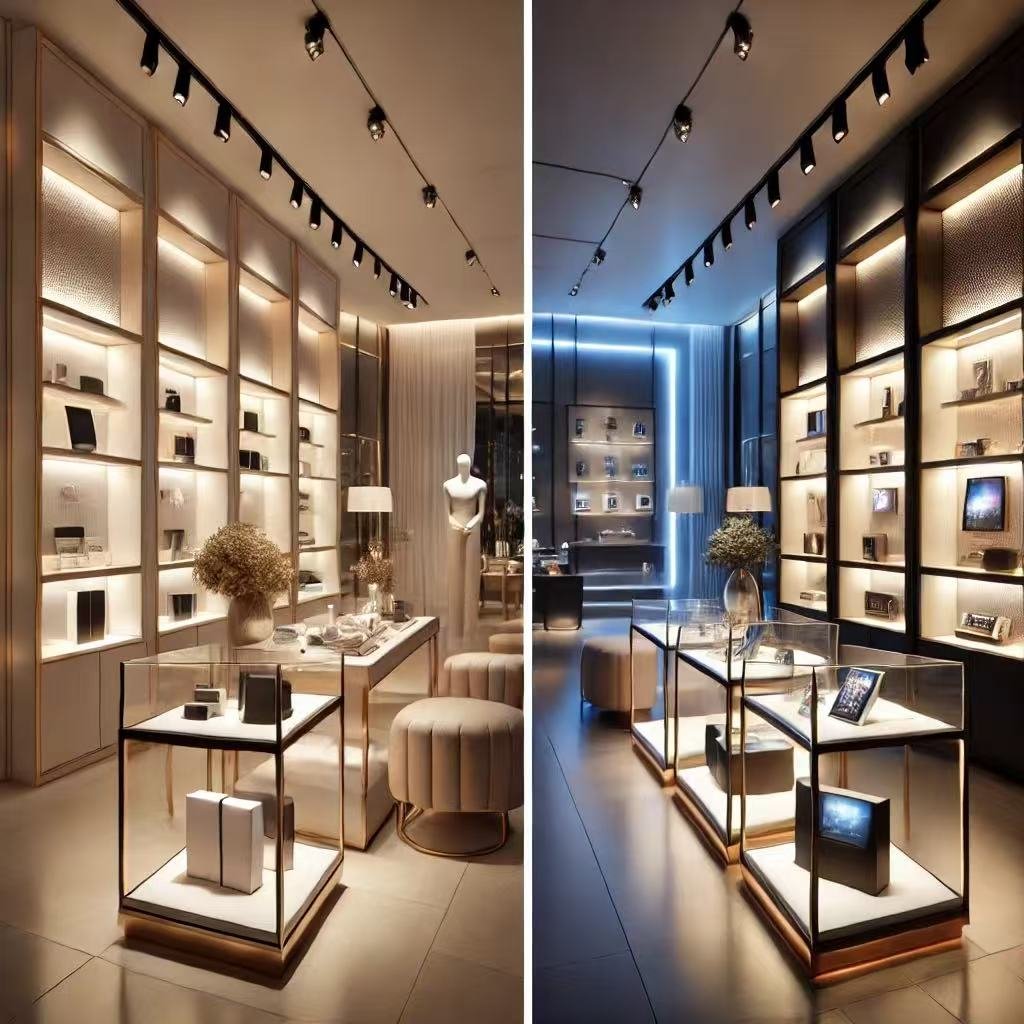
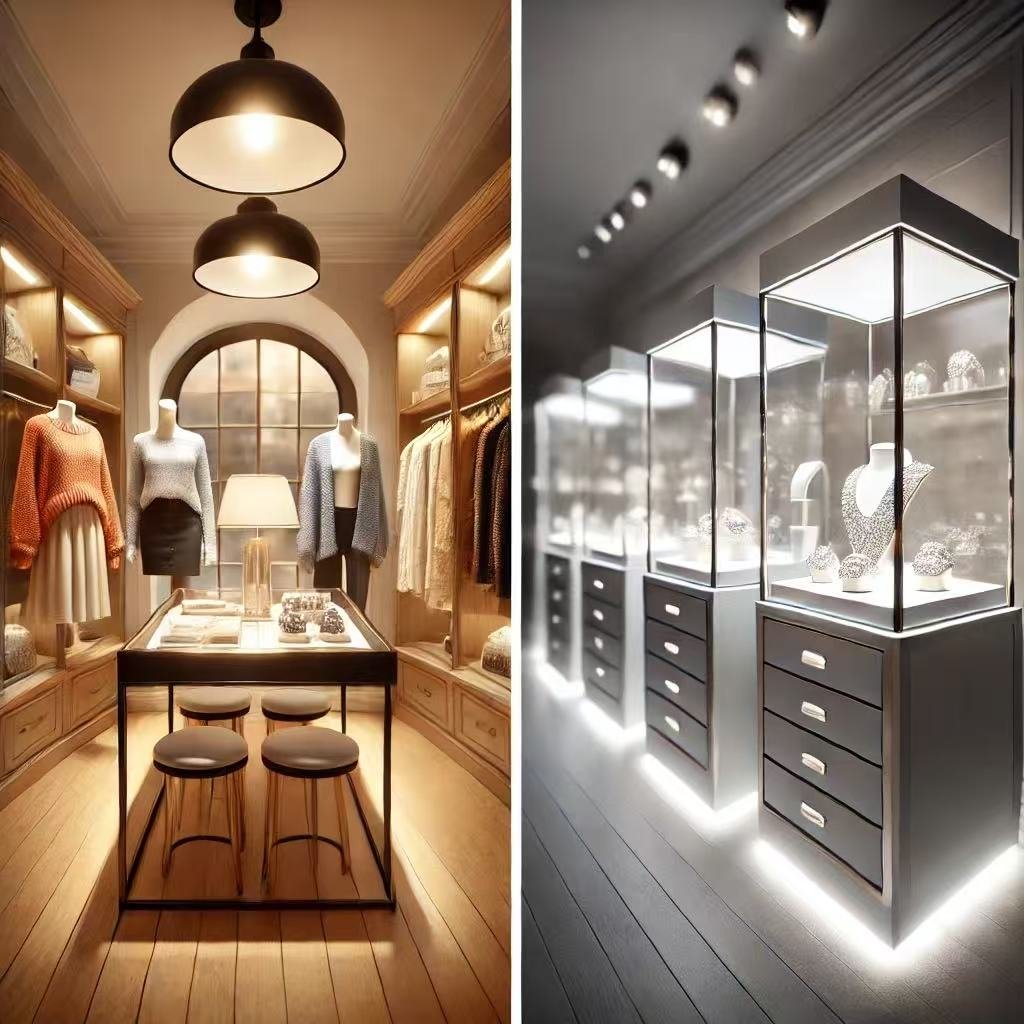
Lighting has a major influence on how customers perceive a store and its products. It can create ambiance, highlight features, and even evoke emotions. For instance, soft lighting creates a warm, inviting atmosphere, while brighter lights make spaces feel more energetic and dynamic.
Effective lighting strategies can highlight focal points within the store, such as featured products or promotional displays. At Fairwill Display, using glass showcases with the right lighting makes the products inside appear more appealing and luxurious. Lighting can be adjusted based on the specific display and the desired effect. Whether it’s accent lighting for special offers or overhead lights to brighten the entire space, the right lighting can enhance the aesthetic and functionality of the store.
Color Theory
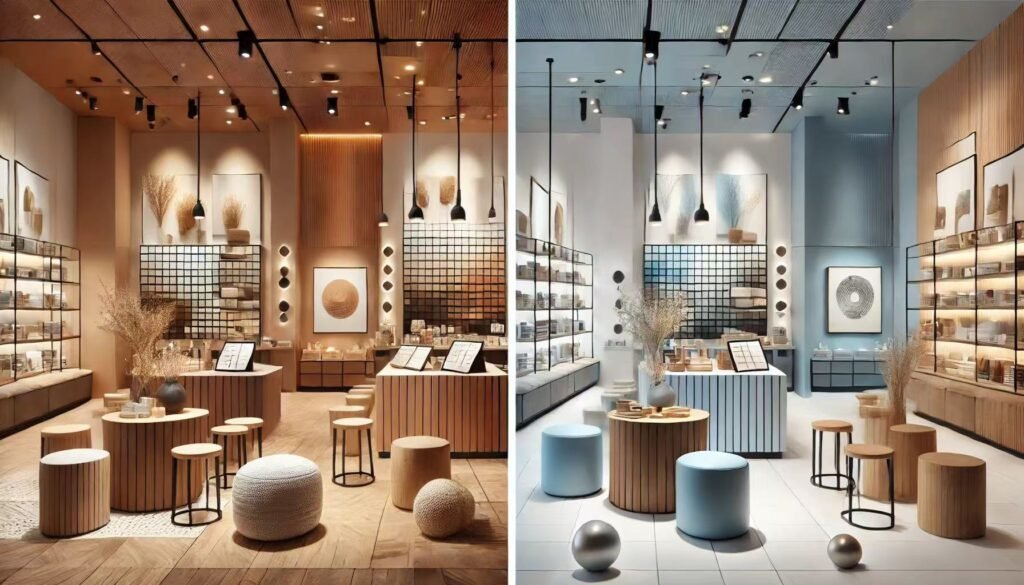
Color plays a vital role in visual merchandising. It can influence emotions, attract attention, and create a sense of harmony within the store. When choosing colors for displays, it’s important to consider the store’s overall branding as well as the products being showcased.
Warm colors like red and yellow evoke excitement and urgency, while cool colors like blue and green can create a sense of calm and relaxation. These colors should be used thoughtfully to guide customer behavior. For instance, a vibrant red display might draw attention to a clearance section, while a serene blue display could highlight premium, high-end items.
By incorporating colors that align with your brand, you can enhance your store’s identity and appeal to your target market. Whether it’s choosing the right backdrop for your slatwall merchandiser or pairing complementary colors on your checkout counters, color can make a big difference in your visual merchandising strategy.
The Role of Product Placement
Effective product placement is a cornerstone of visual merchandising. It’s not just about displaying products—it’s about displaying them strategically. The placement of products can influence buying decisions. For example, placing high-demand or high-margin items at eye level increases the likelihood of a customer noticing them and making a purchase.
Products should be grouped by category, theme, or price to make it easier for customers to browse. Some stores may choose to place similar items together, while others may create themed displays based on color or season. For instance, using glass showcases to highlight new or limited-edition items gives them more visibility and makes them appear more desirable.
Moreover, product placement should consider traffic flow. Customers often follow a specific route through a store, so it’s essential to place popular items in high-traffic areas where they’re most likely to be noticed. Similarly, impulse items should be positioned near the checkout counter to encourage last-minute purchases.
Signage and Graphics
Clear, attractive signage is essential in guiding customers through the store and communicating key messages. It helps to identify product categories, promotions, and special offers. Whether it’s a sign above a product display or a small price tag next to an item, signage provides valuable information that enhances the customer’s shopping experience.
At Fairwill Display, we offer customizable signage solutions that can easily be incorporated into our glass showcases and Slatwall displays. These signs can highlight product features, prices, or discounts. Well-designed signage not only informs but also draws attention. It should be easy to read, placed at eye level, and consistent with the store’s branding.
Textures and Materials in Visual Merchandising
The materials and textures used in store displays add depth and interest. Different materials can create different effects—metal can evoke modernity, while wood can create warmth. The combination of materials should complement the brand’s image and the message the store wants to convey.
For instance, glass showcases offer transparency, allowing customers to see the products from every angle. When paired with metal or wooden elements, the combination can create a sophisticated yet practical display. The materials should not only look good but also function well. Whether it’s a slatwall or a checkout counter, the materials should be durable and able to withstand daily use.
Creating Focal Points
A focal point is a specific area within the store designed to grab attention. It could be a promotional display, a new product, or a seasonal item. Creating a focal point helps guide customers through the store and leads them toward specific products.
Focal points should be visually striking and placed in high-traffic areas. For example, placing a new product or exclusive offer in the center of the store or at the end of an aisle makes it impossible to miss. The use of lighting, color, and product placement can help highlight the focal point and draw customers in.
Adapting to Changing Trends
The retail environment is constantly evolving. Trends change, and customer preferences shift. Therefore, store owners need to keep their visual merchandising strategies fresh and up-to-date. Seasonal displays, new product lines, and evolving customer tastes should be reflected in the store layout.
For example, incorporating eco-friendly materials or featuring products that align with current trends—like sustainable goods—can help a store stay relevant. As a B2B supplier of store fixtures, it’s important to offer products that are adaptable and allow for easy updates to displays.
The Importance of Store Layout
The layout of a store is the first thing a customer interacts with upon entering. It sets the stage for the entire shopping experience. A clear, organized layout can make the difference between a customer staying in the store or walking out. This is why creating an effective store layout is crucial to boosting sales and ensuring a positive shopping experience.
A good layout ensures that products are placed in a way that draws attention and encourages interaction. A well-planned store layout has a logical flow that guides customers naturally through the store. It’s not just about putting products on shelves; it’s about arranging them in a way that feels intuitive and effortless. The right store layout can create an inviting atmosphere that customers want to spend time in.
Effective store layouts use strategic planning to control the flow of foot traffic. For wholesalers, understanding the importance of layout design and offering store fixtures that support efficient product placement is key. For instance, providing modular display fixtures, such as slatwall merchandisers or glass showcases, helps clients optimize the use of their available space.
Guiding Customers Through Your Store
One of the primary functions of a store layout is to guide customers through the space. This process is often referred to as “traffic flow.” A store layout can dictate where customers go, what they see, and even how long they stay. The key to a successful traffic flow is making sure customers can easily navigate the store without feeling overwhelmed or confused.
There are several ways to guide traffic effectively. For example, creating wide aisles ensures that customers can move around easily, while strategically placing products in certain areas encourages exploration. By organizing the store in a way that leads customers through high-traffic areas, you can maximize the chances of them interacting with your featured products. This layout encourages customers to linger in specific zones of the store, increasing the likelihood of additional purchases.
The layout also creates a sense of organization. When everything is placed with purpose and thought, customers feel more at ease. If a store’s layout is chaotic, shoppers may feel lost, leading to frustration and, ultimately, leaving without buying anything. Therefore, organizing product placement and controlling the flow of customers is essential for maintaining a pleasant shopping environment.
Creating Zones Within the Store
Creating distinct zones within the store is another crucial aspect of layout design. Different sections of the store should be designated for specific types of products. These “zones” help customers navigate the space and find what they need with ease. Zones can be based on product types, seasons, or promotions.
For example, if you’re selling slatwall merchandisers or checkout counters, you can create separate areas for each product category. A clear division of space allows for more organized displays, helping the customer focus on one category at a time. Zones also allow for more specialized display techniques. For example, the checkout counter area can feature impulse-buy items, while the main floor could be dedicated to larger, more expensive products.
One of the benefits of creating distinct zones is that it allows for product grouping. Products that complement each other should be placed near each other to encourage cross-selling. For instance, if you sell glass showcases and shelving units, placing them together in one zone will help customers visualize how they can use both products together in their own stores.
The Importance of Product Placement
Product placement plays a pivotal role in store layout. Where you place your products in the store affects how likely they are to be purchased. Studies show that products placed at eye level are more likely to be noticed and bought. This is why it’s important to make strategic decisions about where to place your products.
For example, products that are high in demand or have a special promotion should be placed in areas where they are easily visible. If you have high-quality glass showcases that you want to feature, placing them in an area near the entrance or at eye level can increase their visibility and make them more appealing to customers.
Another consideration is the use of end caps. End caps, which are the displays located at the end of aisles, are prime real estate within any store layout. These areas attract customers’ attention because they stand out from the rest of the display space. For store fixture suppliers, placing featured products like slatwall merchandisers or checkout counters on end caps can help them get noticed more easily.
Product placement isn’t just about visibility. It’s about making it easy for customers to interact with the products. Easy access to products encourages engagement, which can lead to purchases. Whether it’s a simple display fixture or a more elaborate showcase, customers should be able to touch and see the products up close to make informed buying decisions.
Maximizing Space Efficiency
Space is often limited in retail environments. Whether you’re working with a small boutique store or a larger wholesale operation, maximizing space efficiency is essential. A well-designed store layout ensures that every square foot is used effectively.
One way to maximize space is through vertical displays. Slatwall panels and glass showcases are excellent for utilizing vertical space. By adding these fixtures, you can display more products without taking up valuable floor space. This strategy allows you to make the most of your store’s square footage, especially when working with limited space. Vertical displays are not only practical but also visually appealing, giving the store a modern and clean look.
In addition, using flexible fixtures can help you adapt the store layout as needed. Modular shelving units or adjustable slatwall displays give store owners the ability to change their layout based on current stock or promotions. This flexibility ensures that the store always looks fresh, and it allows you to take advantage of any available space without having to overhaul the entire store layout.
Maximizing space efficiency also involves maintaining proper aisle widths. Aisles that are too narrow can cause discomfort for customers and hinder the movement of foot traffic. Too wide an aisle, however, can create unused space that isn’t productive. The ideal aisle width balances customer comfort with functional product placement, ensuring that customers can easily explore the store while still interacting with your products.
Creating Emotional Engagement Through Layout
A well-organized layout not only guides customers but also creates an emotional connection. The way customers experience your store affects how they perceive your brand and your products. A pleasant shopping environment increases the likelihood that customers will return and recommend your store to others.
One effective way to create emotional engagement is through sensory elements. For instance, creating a comfortable atmosphere using soft lighting or pleasant scents can enhance the shopping experience. Thoughtfully arranged fixtures can also encourage customers to stop and admire a particular product. Adding elements like plants, artwork, or decorative accents can help create an environment that feels welcoming and personalized.
By offering a comfortable and engaging shopping environment, you turn your store into more than just a place to buy products. It becomes an experience. And when customers feel good about the environment, they are more likely to spend time exploring and make purchases. This emotional engagement can foster customer loyalty and result in higher sales over time.
Adapting Layouts for Different Retail Needs
Different types of retail stores require different store layouts. For example, a boutique store may benefit from a more open layout with fewer barriers between products, allowing customers to freely explore. In contrast, a wholesale store may require a more organized, grid-style layout that allows for efficient product placement and easy access to large quantities of stock.
When creating store layouts, it’s important to tailor the design to the specific needs of the business. For wholesalers who sell store fixtures, it’s vital to showcase the versatility and functionality of the products you offer. Displaying modular shelving, slatwall systems, or checkout counters in different layouts will demonstrate how they can be adapted to various retail environments.
Flexibility is key. No matter the size or type of store, a well-designed layout can easily be adjusted to fit the unique needs of each business. Offering versatile fixtures like glass showcases or adjustable shelving systems will allow retailers to customize their layouts as their business evolves.
Product Placement: Creating an Effective Display
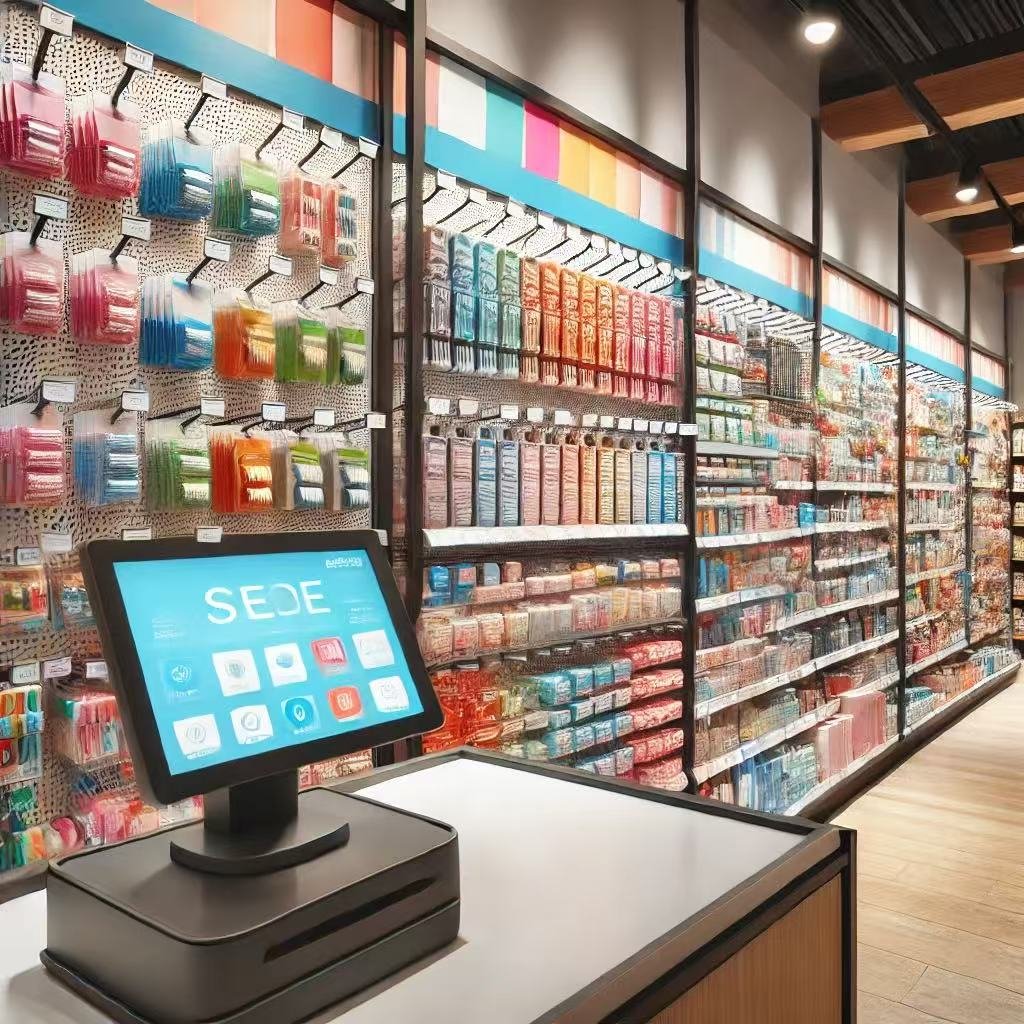
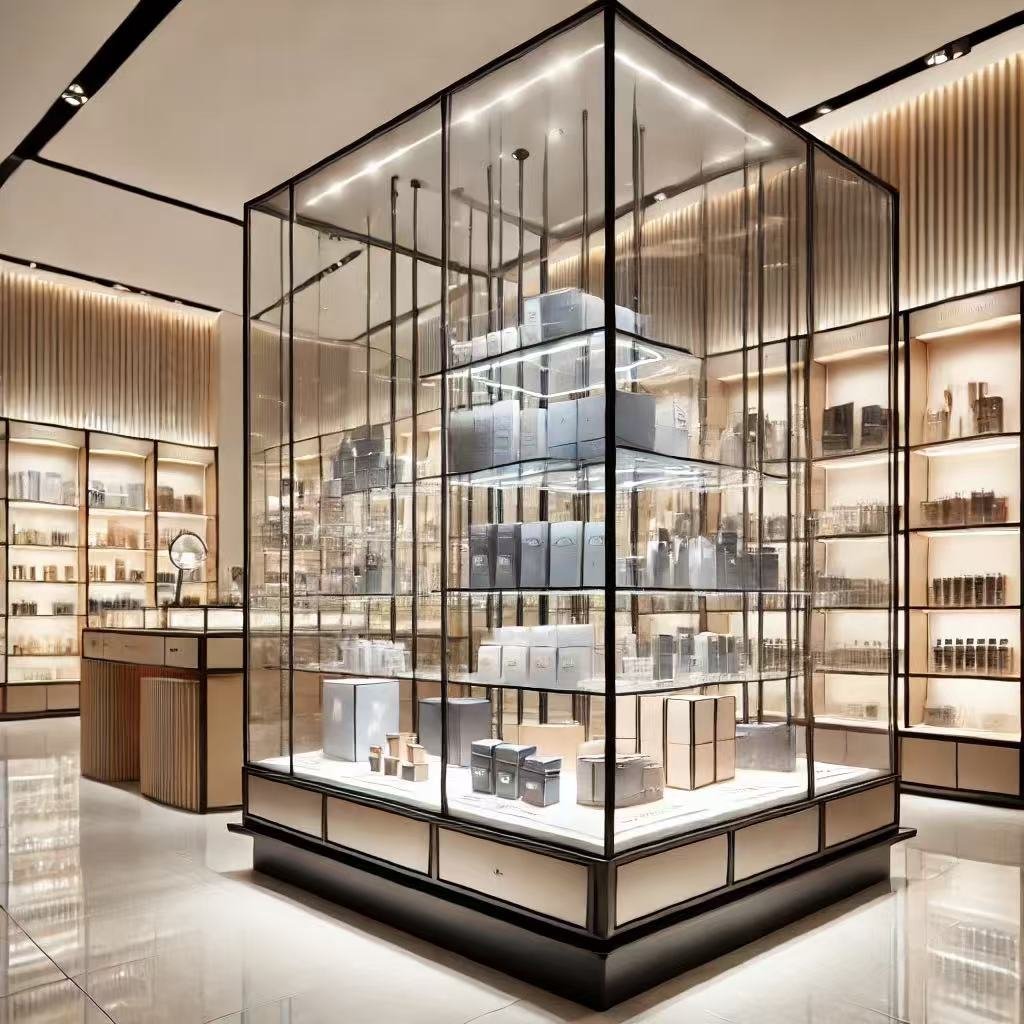
Effective product placement is at the heart of visual merchandising. When customers walk into a store, the way products are positioned and presented can make a significant difference in how they engage with them. The strategic arrangement of products isn’t just about making the space look appealing; it’s about directing customer attention, encouraging exploration, and ultimately driving sales. This section will explore the importance of product placement, how to create effective displays, and tips for maximizing the impact of your store fixtures.
Understanding the Basics of Product Placement
Product placement refers to the process of strategically positioning products in a way that attracts attention and encourages purchasing. It’s a technique used to guide customers through the store and influence their buying decisions. The goal is to showcase products in a way that feels natural, accessible, and desirable. For instance, placing high-demand items at eye level ensures they are noticed first. Similarly, grouping related items together can create a sense of coherence and convenience.
One of the most critical elements in product placement is ensuring that products are easy to find. Customers should never have to search for a product they’re interested in. When products are displayed in an organized and visually appealing way, they stand out and catch the customer’s attention. As a supplier of store fixtures, offering flexible display options like slatwall merchandisers and glass showcases can help businesses implement effective product placement strategies.
Using the Power of Eye Level Displays
One of the first rules of product placement is to prioritize what customers see first. Studies show that products placed at eye level are more likely to be noticed and purchased. This is why the most popular and profitable items are often placed at the customer’s eye level. By positioning items here, you are increasing their visibility and creating an opportunity for them to be the focal point of the customer’s attention.
Eye level is a natural vantage point for most shoppers, and they don’t have to strain to find products. This level should be used for products that you want to promote or that have high turnover rates. Glass showcases are an excellent choice for these kinds of displays because they give products an elegant look while allowing customers to see them from every angle.
At the same time, it’s important to keep in mind that not every product belongs at eye level. Smaller or less prominent items can be placed on lower shelves or higher up, ensuring that they don’t clutter the focal points of the display. Thoughtfully considering where to place each product is key to creating an effective merchandising strategy.
The Role of Grouping Related Products
Another key strategy in product placement is grouping related items together. This technique helps streamline the shopping experience by making it easier for customers to find what they’re looking for. For example, if you’re selling store fixtures, grouping slatwall displays, checkout counters, and glass showcases together makes sense because these products are complementary. Customers can visualize how the pieces work together and see the complete solution.
Product grouping can also create opportunities for upselling or cross-selling. If a customer picks up a glass showcase, they may also be interested in purchasing additional shelves, lighting fixtures, or display accessories. By placing related items nearby, you make it easy for customers to add more items to their purchase. Additionally, grouping products helps to establish a thematic display, making the store feel more cohesive and organized.
Another benefit of grouping products is that it can help manage store space. When products are displayed together in an organized manner, it reduces the clutter that can overwhelm customers. This creates a more positive shopping environment where customers can focus on what matters most: the products themselves.
The Impact of Color and Contrast in Product Placement
When it comes to product placement, color and contrast play a significant role. Bright, bold colors tend to attract attention, while softer tones can create a calming atmosphere. The way you use color in product displays can either emphasize a product or make it blend into the background. For instance, if you want to highlight a particular product, you can use contrasting colors in the background or accessories to make it pop.
The placement of colors in your displays can guide customer behavior. For example, placing red products in a prominent spot can invoke urgency and excitement. On the other hand, cool blues and greens tend to have a calming effect and can encourage customers to take their time exploring. Understanding the psychological effects of color will help you create displays that align with your store’s atmosphere and product messaging.
Contrast is also an essential consideration. High-contrast displays attract attention because they create a visual break from the surrounding environment. When placing products on shelves, consider the color of the products as well as the background. A dark-colored product displayed against a light-colored background will stand out more than a product of the same color placed against a similar background.
Maximizing the Use of Vertical Space
One often-overlooked area of product placement is vertical space. Many retailers focus on horizontal displays but fail to take full advantage of their vertical space. Vertical displays can be especially useful for items like store fixtures, where products need to be showcased from different angles. For example, tall slatwall units allow you to showcase multiple items while saving valuable floor space.
Using vertical space effectively also makes it easier for customers to view a wide range of products. When you place items on high shelves or create vertical displays, customers can see more at once without having to bend down or stretch. This improves the overall shopping experience, making it both convenient and visually appealing.
However, while vertical space can be a great asset, it’s important to ensure that items placed at higher levels are still accessible. Glass showcases with adjustable shelves offer the flexibility to showcase items at varying heights while maintaining easy access for customers.
The Power of Signage in Product Placement
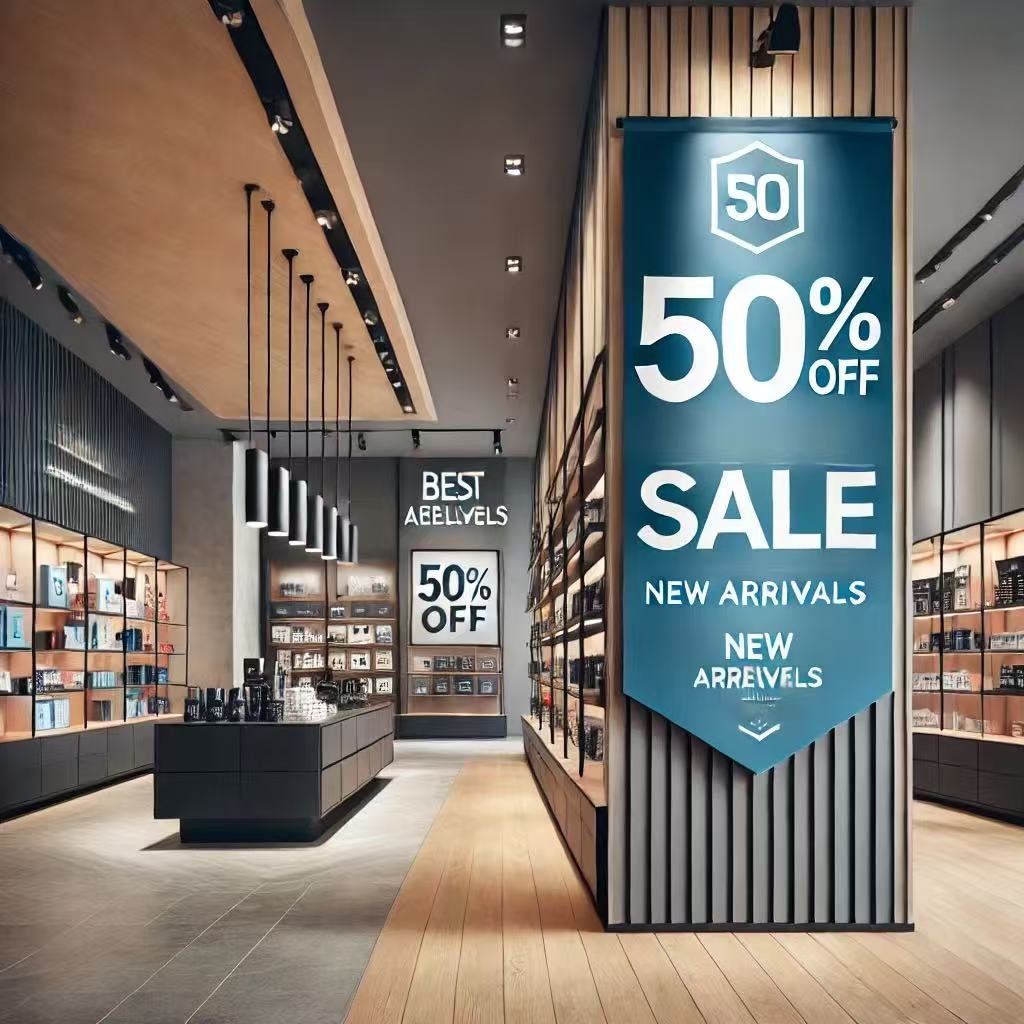
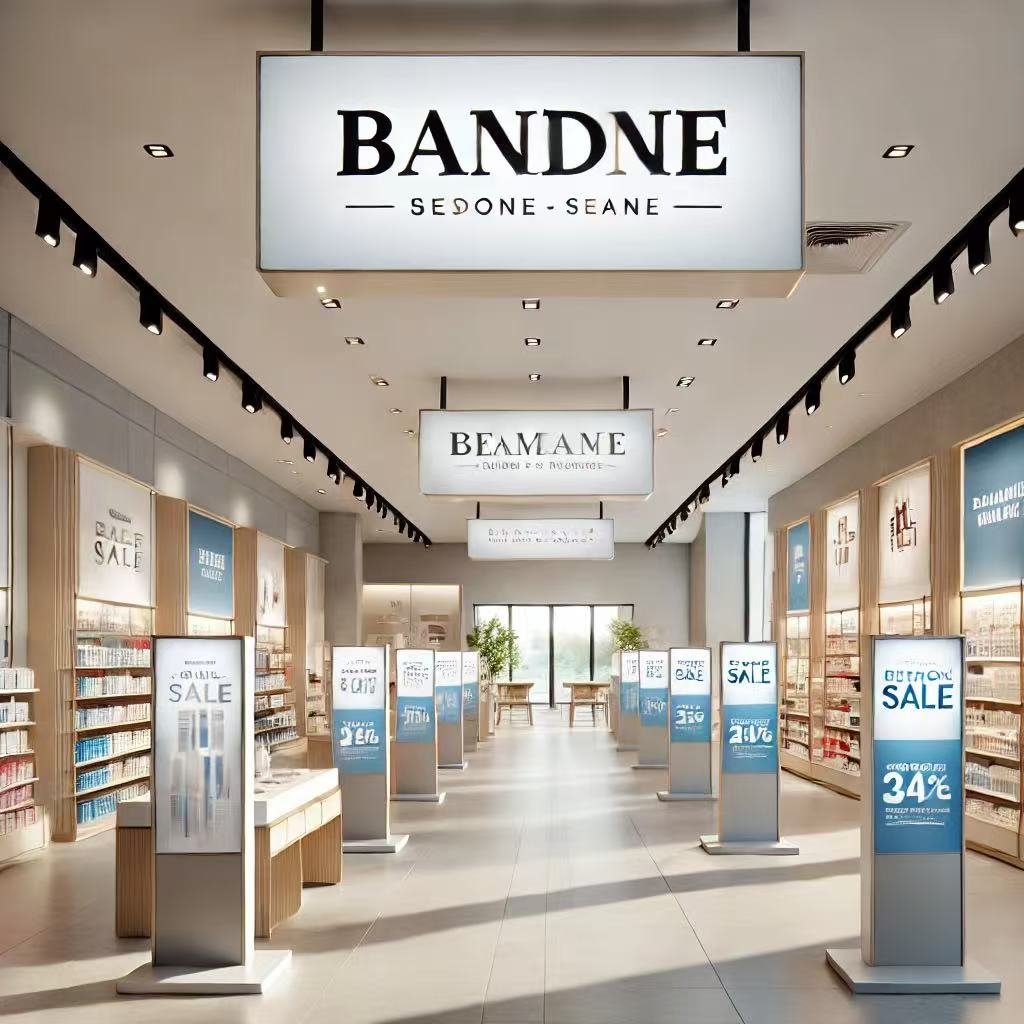
Effective signage is crucial in guiding customers to the right products. Signage not only directs customers but also enhances product placement by adding context. For example, a sign that reads “Best Sellers” above a display of popular products encourages customers to take a closer look. Similarly, promotional signage can draw attention to discounted items or new arrivals.
When positioning products, always consider where signage will be placed. Signs should be clearly visible and easily read from a distance. They should complement the product display without overpowering it. The best displays use signage to guide the customer journey, enhancing the overall experience.
Additionally, the use of digital signage can create a more dynamic and interactive experience for customers. Digital displays can show rotating images, product features, or even customer reviews, which further engage shoppers and encourage them to explore your products in greater detail.
Keeping Product Placement Fresh and Dynamic
One of the challenges of product placement is ensuring that displays don’t become stale. Over time, customers may stop noticing products if they remain in the same place for too long. To combat this, it’s important to refresh displays regularly. This can involve rotating products, adjusting shelf layouts, or changing the color scheme to create a new look.
Regularly updating your product displays not only keeps the store visually interesting but also signals to customers that your store is active and evolving. For example, you can introduce new seasonal displays or highlight limited-edition products. When customers see that the store is frequently updated, they are more likely to return and explore new offerings.
As a store fixture supplier, you can offer your clients flexible and modular display systems that allow for easy changes and updates. This ensures that their product placement strategy remains dynamic and engaging over time.
Evaluating the Success of Product Placement
After implementing a product placement strategy, it’s essential to measure its effectiveness. How well are your customers responding to the displays? Are there certain products that are selling better after being moved to a new location? Tracking sales data and customer behavior can provide valuable insights into which placements are most effective.
Customer feedback is another useful tool for evaluating product placement. You can ask customers about their shopping experience and if they found it easy to locate the products they were interested in. This can help you identify areas for improvement and refine your product placement strategy.
As you track the performance of your displays, be open to making adjustments. Even small changes, such as shifting products slightly or adjusting signage, can have a significant impact on sales.
Conclusion: Mastering Product Placement
Effective product placement is essential for driving sales and creating a memorable shopping experience. By understanding the basics of product placement and applying strategies like using eye-level displays, grouping related items, and leveraging color and contrast, you can design displays that capture attention and encourage customers to make purchases.
As a supplier of store fixtures, you play a crucial role in helping your clients create effective product placements. By offering flexible, customizable display solutions, you can help businesses optimize their store layouts and improve the overall customer experience. Remember, product placement is not just about putting items on a shelf—it’s about creating an environment that guides and engages customers in a way that leads to sales.
Signage: Communicating with Your Customers
Signage plays a vital role in retail environments, acting as a communication bridge between businesses and their customers. It can help guide customers, inform them about promotions, and reinforce branding. In the world of visual merchandising, the right signage not only improves store navigation but also enhances the overall customer experience. It provides important information quickly and effectively.
Effective signage is not just about putting up a sign. It’s about ensuring that the message is clear, concise, and visually appealing. Retail stores, especially those serving wholesalers and boutique stores, need signage that reflects their products and brand identity. Whether it’s a bold window sign or a small tag next to a product, each piece of signage serves a unique purpose. Understanding how to use signage effectively can significantly boost a store’s customer engagement and sales potential.
Types of Signage: From Informative to Decorative
In retail spaces, signage comes in many forms. These can range from large banners to small tags, digital screens, and even floor decals. Each type serves a distinct purpose, but all contribute to a unified customer experience.
Large signs often serve to attract attention from a distance. These could be window decals, banners, or overhead signs. For instance, a “Sale” banner placed outside the store or above the entrance can instantly inform potential customers of discounts or promotions. These signs are not just informative; they can be designed to align with your store’s aesthetics, promoting a specific theme or product range.
On the other hand, smaller, more detailed signs can be placed inside the store to guide customers through the shopping experience. For example, tags next to products can explain features, pricing, or even offer discounts. Digital signage can provide dynamic content that changes based on inventory, promotions, or even time of day, keeping the store’s message fresh and engaging.
The Psychology of Signage
When considering the design and placement of signage, it’s essential to think about the psychological impact it can have on customers. Studies have shown that people are more likely to be drawn to signs that are visually stimulating and easy to read. Color, font, and placement all influence how a sign is perceived and how effective it is at communicating the desired message.
For instance, bold, contrasting colors can draw attention to a sign from a distance, while softer tones can create a more calming effect. The use of large fonts for key information like prices or promotions ensures that the message is easily readable, even from afar. Placement is also crucial—signs should be positioned in areas where they will be seen by a large number of customers but not overwhelm them. Effective signage encourages action, whether it’s walking closer to a product or making a purchase decision.
Understanding how to use color psychology and font choices will help ensure that your signage aligns with your store’s overall branding and message. For example, using red for a clearance sale signals urgency and grabs attention. In contrast, blue and green might be used to convey trustworthiness and calmness, making them ideal for informational signs.
Signage for Wayfinding and Store Navigation
In larger stores or retail environments with multiple sections, wayfinding signage is essential. These signs help customers navigate the space without feeling lost or overwhelmed. For example, directional signs leading to different departments or product categories can significantly improve the shopping experience.
Wayfinding signage doesn’t just tell customers where to go; it also tells them what to expect. For example, a sign that reads “Men’s Clothing” or “Electronics” directs customers to a specific area but also sets expectations for what they will find in that section. Well-placed signs improve the flow of traffic within the store and encourage customers to explore different areas of the space.
The importance of clarity cannot be overstated. Signs should be clear, easy to understand, and placed at appropriate heights. They should be visible from a distance but not intrude on the visual aesthetic of the space. Effective wayfinding reduces frustration, making it easier for customers to find what they are looking for, which can lead to higher sales and customer satisfaction.
Promotional Signage: Driving Sales with Targeted Messages
Promotional signage is one of the most powerful tools a store can use to increase sales. These signs offer clear, direct messages about discounts, offers, or new arrivals. Whether it’s a “Buy One, Get One Free” sign or a “Limited Time Offer,” promotional signage can drive urgency and excitement among customers.
However, for promotional signage to be effective, it must be visible and well-designed. A promotional sign that blends into the background will fail to capture attention. To stand out, promotional signage should be large enough to be noticed, with a design that draws the eye. Bright colors like red or yellow can be used to convey urgency, while clear, bold text ensures the message is understood quickly.
Moreover, promotional signage should be placed near relevant products. For instance, a “30% Off” sign next to a popular product can entice customers to purchase. Placement near the checkout area can also increase impulse buys. When strategically placed, promotional signage has the power to drive sales and encourage customers to take advantage of time-sensitive offers.
Branding Through Signage
One of the primary functions of signage is to reinforce brand identity. Signage is an opportunity to communicate your brand’s personality, values, and message to customers. For instance, the font and colors used in a store’s signage should align with the store’s branding. The signage should reflect the tone of the store—whether it’s casual, high-end, or playful—through the use of appropriate materials, colors, and designs.
Using your store’s logo in signage ensures that customers recognize your brand instantly. In addition, signs can be used to tell your brand’s story. This could include a sign that displays your brand’s mission or values, helping customers connect with your store on a deeper level. As a wholesaler selling to boutique stores, offering customizable signage solutions can help your clients maintain brand consistency across their retail environments.
Consistency is key when it comes to branding. By ensuring that your signage reflects your brand’s colors, fonts, and message, you create a cohesive look throughout your store. This creates a more professional, polished appearance that can leave a lasting impression on customers.
The Importance of Digital Signage
In today’s fast-paced retail environment, digital signage is becoming increasingly popular. Unlike traditional signs, digital signage offers flexibility and can be updated in real-time. Digital signs can display dynamic content, such as promotions, video advertisements, or product demonstrations. This adds an interactive element to your store that static signs simply cannot provide.
Digital signage can also allow for more targeted messaging. For example, you can display promotions specific to the time of day, such as “Happy Hour” discounts or “Early Bird Specials.” Digital screens can also integrate with other technologies, such as social media feeds or customer reviews, to create a more engaging experience for shoppers.
For businesses that want to stand out, investing in digital signage is a smart choice. It can be used to draw customers’ attention to new arrivals, limited-time offers, or in-store events. Moreover, because digital signage can be updated frequently, it provides endless possibilities for creativity and customization.
Interactive Signage: Engaging the Customer
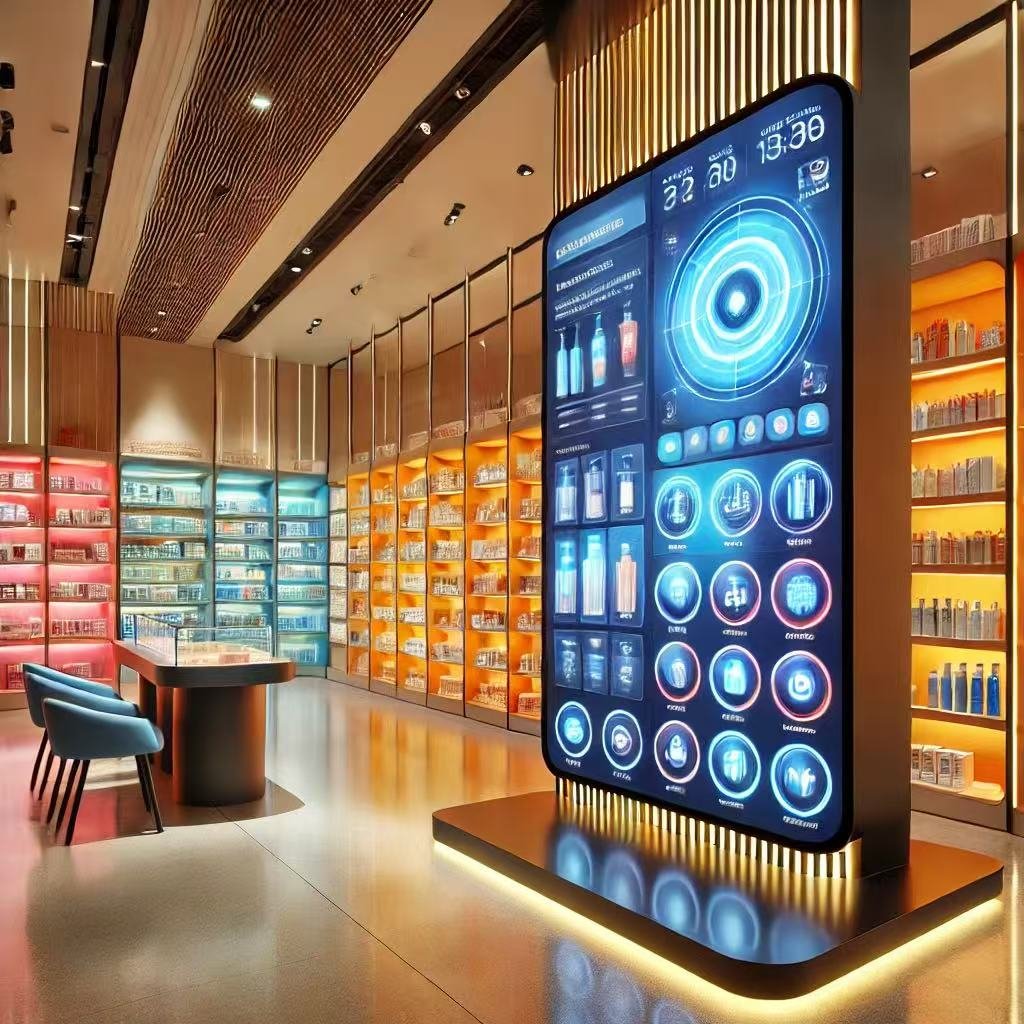
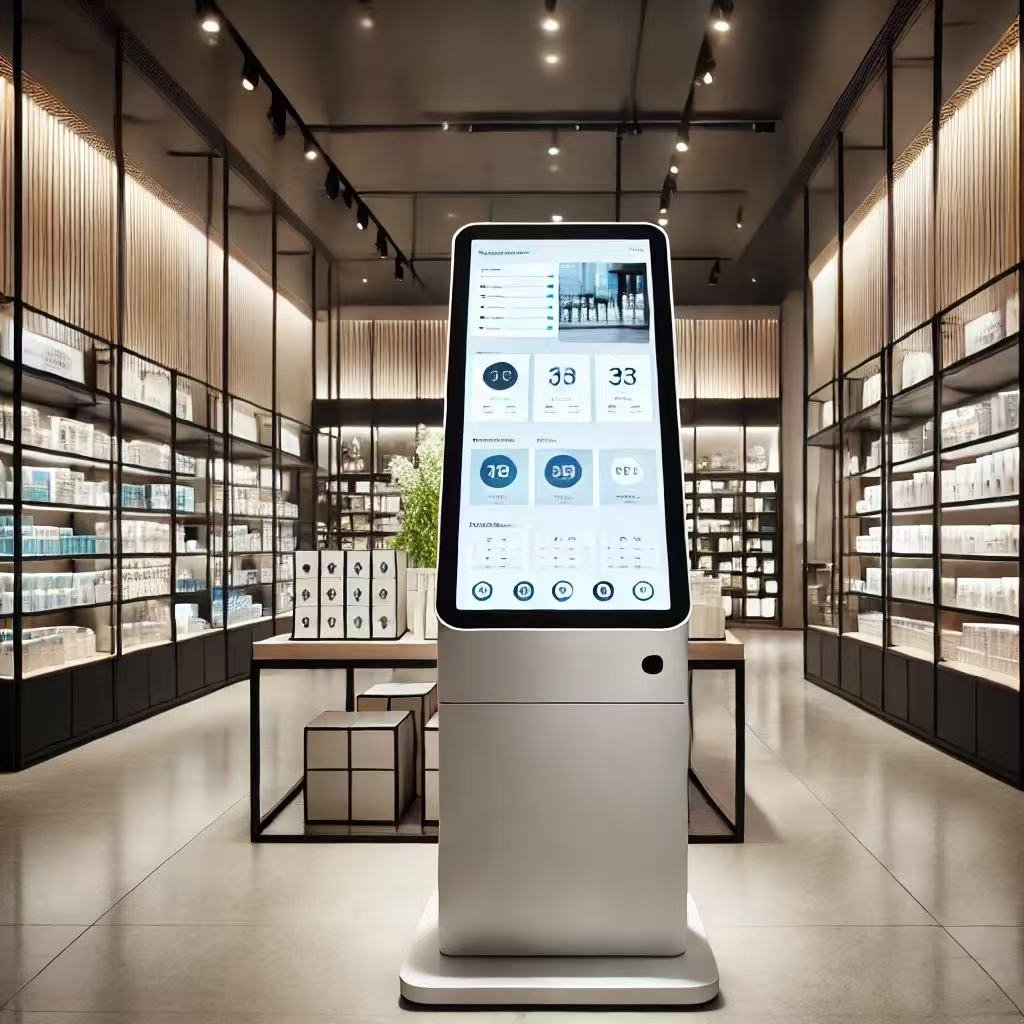
Interactive signage takes digital signage a step further by allowing customers to engage directly with the content. This can include touch-screen displays that allow customers to browse through product catalogs, search for specific items, or check out detailed product information. Interactive displays can even enable customers to see a virtual version of themselves trying on clothes or accessories.
This type of signage offers a more personalized experience for customers. It allows them to interact with the store in a way that feels more engaging and dynamic. For example, an interactive digital display can allow customers to find the size, color, or style of a product that they are interested in. Interactive signage creates a sense of involvement and empowerment, which can increase customer satisfaction and sales.
Interactive signage also has the potential to collect data on customer preferences and behavior, providing valuable insights for business owners. This data can be used to improve store layouts, promotional strategies, or even the types of products offered.
Effective Placement and Design of Signage
The effectiveness of signage is largely determined by its placement and design. A well-placed sign will catch a customer’s eye, while a poorly positioned sign might go unnoticed. Consider where customers typically spend their time in the store. Key areas like entrances, windows, and aisles are prime locations for signs that need to catch attention.
The design of the sign also plays a critical role in its effectiveness. The colors, fonts, and images used should all work together to create a visually appealing sign. A cluttered or overly complex sign will confuse customers and fail to convey the intended message. It’s important to strike a balance between being informative and visually attractive. The message should be simple and direct, ensuring that customers understand what is being communicated immediately.
Conclusion: The Power of Signage in Visual Merchandising
Signage is a fundamental aspect of visual merchandising that helps guide, inform, and engage customers. Whether it’s through wayfinding, promotional offers, or brand reinforcement, signage plays a crucial role in shaping the overall shopping experience. By using signage effectively, stores can create a more organized, visually appealing, and informative environment.
The right signage can influence buying decisions, drive sales, and improve customer satisfaction. For wholesalers, providing your clients with high-quality, customizable signage solutions can enhance their retail spaces and help them achieve their business goals. Understanding the psychology of signage, how to design it effectively, and where to place it in the store can make a significant difference in the success of a retail environment.
Maximizing Space Efficiency
Space efficiency in retail is not just about fitting more products into a given area. It’s about using the space in a way that enhances the shopping experience and drives sales. Retailers, especially wholesalers and boutique stores, face constant pressure to make the most of their available space. In most cases, retail spaces are not unlimited. Whether you’re operating in the USA, Sweden, or Australia, efficient use of space can improve product visibility and create an enjoyable shopping experience for your customers.
Maximizing space efficiency involves more than just packing as many items as possible into a store. It’s about striking a balance between product display, customer comfort, and store layout. The key to success lies in strategically using every inch of available space to achieve these goals.
The Role of Display Fixtures in Space Efficiency
Effective space management starts with the right display fixtures. These fixtures play a critical role in how products are arranged and how much space is utilized. Glass showcases, slatwall merchandisers, and other store fixtures are essential tools for maximizing space efficiency.
Glass showcases offer an elegant way to display high-value or small items without occupying too much floor space. These fixtures are not only functional but also enhance the store’s overall aesthetic. By using transparent materials like glass, you avoid overwhelming the space with bulky displays, and instead create a sense of openness and clarity.
Slatwall merchandisers are another essential fixture for maximizing space. They allow you to hang products efficiently and organize items vertically. Slatwall panels take advantage of wall space that would otherwise go unused. This method is particularly useful in smaller stores where floor space is limited. Slatwall displays are versatile and can hold a variety of products, from apparel to accessories, creating a clean and organized look.
Using modular shelving is also an excellent way to improve space efficiency. These adjustable units allow you to change the configuration of your displays based on your inventory. This flexibility makes it easier to adapt to new products and seasonal changes. Modular shelving systems can be configured in various ways to meet the needs of your store while maintaining a streamlined and efficient layout.
The Importance of Vertical Space
In many retail environments, floor space is limited. That’s why maximizing vertical space is so crucial. Vertical displays allow you to showcase a larger range of products in a smaller area. By using tall shelving units, wall-mounted displays, and hanging fixtures, you can increase your store’s capacity without sacrificing floor space.
Vertical displays not only provide more storage but also help in guiding the customer’s flow through the store. Products placed at different heights are easier to spot and can create a sense of structure and organization. Vertical displays also prevent the store from feeling overcrowded, offering customers more breathing room as they navigate the space.
For example, slatwall merchandisers, as mentioned earlier, can be mounted on walls, freeing up valuable floor space. They can accommodate a variety of products, allowing for easy access and visibility. By using vertical space effectively, you create an environment where customers feel comfortable while still being able to view a wide array of products.
Organizing Products for Maximum Impact
It’s not just about the space you have—it’s also about how you organize that space. Product placement plays a major role in space efficiency. Thoughtful organization helps reduce clutter and makes it easier for customers to find what they’re looking for. A well-organized store encourages customers to explore the space and engage with more products, potentially leading to more purchases.
One effective strategy for organizing products is grouping similar items together. For example, display all your tech accessories in one section, while apparel items could have their own dedicated space. This makes it easier for customers to find what they want, minimizing frustration and encouraging impulse buys.
To maximize the use of space, you can also use tiered displays. By stacking products on different levels, you create a sense of depth and make better use of the vertical space. In smaller stores, tiered displays can give the illusion of more products while maintaining an open, airy feel.
Additionally, placing your best-selling items at eye level is an effective strategy. Products placed at eye level are more likely to catch customers’ attention. The strategic placement of high-demand products can drive sales and increase product visibility.
Optimizing Aisles and Walkways
Maximizing space efficiency doesn’t only apply to the display areas—it also extends to the aisles and walkways. Creating clear, wide aisles ensures customers can navigate the store easily without feeling cramped or uncomfortable. If your store is small, utilizing every inch of the space is even more critical. You want customers to feel welcome and not overwhelmed by a cluttered environment.
One effective way to maximize aisle space is by using narrower, more compact display units. These units can be placed strategically along the aisles without blocking the flow of traffic. Modular shelving and display counters are excellent for this purpose. They allow you to optimize space while maintaining accessibility.
Another important consideration is ensuring that aisles are free from obstructions. Cluttered walkways can frustrate customers and make the store feel chaotic. By keeping aisles clear and utilizing compact fixtures, you can maintain a sense of openness. This, in turn, makes it easier for customers to browse, increasing the chances of a sale.
Using Light to Enhance Space Efficiency
Lighting plays an essential role in space efficiency, not just for illuminating products but also for creating the right atmosphere. Proper lighting can make a small space feel larger and more inviting. By strategically placing lighting fixtures, you can highlight key products while also defining different sections of the store.
Bright lighting helps to draw attention to specific areas or products. It can also create a sense of openness, making the space appear less cramped. If your store has limited space, avoid using too many large light fixtures that could take up valuable room. Instead, opt for smaller, more efficient lighting options that still provide adequate illumination.
For example, using spotlights or track lighting on key displays can create a focused, polished look while maintaining the efficiency of your space. Additionally, soft, ambient lighting in certain areas can create a more relaxed atmosphere without overwhelming the space.
Adapting to Changing Inventory
Inventory in retail stores is often in flux, with new products arriving and others being phased out. It’s important to design your store layout with this in mind, so your space remains adaptable. The flexibility of your display fixtures plays a major role in this adaptability.
Modular shelving systems, for instance, allow for easy reconfiguration when inventory changes. This means you can accommodate new products or seasonal items without overhauling the entire store. Similarly, slatwall displays can be adjusted to fit different types of merchandise, allowing for greater flexibility as your inventory evolves.
Being able to quickly and easily adapt to changes in inventory helps ensure that your store is always optimized for the products that are most in demand. This adaptability contributes to space efficiency by making sure that only the most relevant items are on display at any given time.
The Psychological Impact of Space Efficiency
Space efficiency doesn’t just benefit store owners—it also affects customers’ shopping behavior. When a store feels open, organized, and easy to navigate, customers are more likely to enjoy their shopping experience and stay longer. Conversely, when a store feels cramped and cluttered, customers may feel uncomfortable or rushed.
Efficient use of space can also influence how customers perceive your products. Items displayed clearly and effectively are more likely to be viewed as high-quality and worth purchasing. When products are displayed in an organized and strategic manner, customers are more likely to engage with them and make a purchase.
The psychology of space is critical in retail. By creating a spacious, well-organized environment, you encourage customers to relax, browse, and ultimately buy. This is why maximizing space efficiency is so important—not just for product organization but for creating a positive shopping experience.
Conclusion: Achieving Space Efficiency in Retail
Maximizing space efficiency in retail requires a combination of careful planning, the right fixtures, and an understanding of your store’s layout. By using display fixtures like glass showcases, slatwall merchandisers, and modular shelving, you can create a functional and organized store that enhances the customer experience. Strategic product placement, the use of vertical space, and the careful arrangement of aisles are all essential elements in achieving space efficiency. Additionally, using lighting effectively can enhance both the atmosphere and the visibility of your products.
Ultimately, space efficiency is about making the most of the limited space you have, while still creating an inviting and enjoyable shopping environment. By focusing on maximizing space, you ensure that your store remains organized, appealing, and capable of driving sales.
Integrating Technology into Visual Merchandising
In the modern retail landscape, integrating technology into visual merchandising has become crucial for creating dynamic, engaging, and personalized shopping experiences. Retailers who embrace technology in their merchandising strategies can create environments that not only attract customers but also engage them on a deeper level. Whether it’s through digital signage, interactive displays, or augmented reality (AR), technology can transform traditional store layouts into innovative experiences that drive sales and customer satisfaction.
One of the key benefits of using technology in visual merchandising is its ability to attract and retain customer attention. Customers today are drawn to interactive, immersive experiences. By incorporating digital elements into displays, retailers can engage customers in ways that traditional static displays cannot. For example, digital screens can be used to showcase product videos or offer real-time promotions, making the shopping experience more dynamic and informative. Additionally, interactive elements, such as touchscreens, can allow customers to explore product features in detail, ultimately leading to more informed purchasing decisions.
Digital Signage: A Game-Changer in Visual Merchandising
One of the most powerful tools for integrating technology into visual merchandising is digital signage. Digital screens and monitors provide an opportunity to display a wide range of content, including product advertisements, promotions, and even real-time stock availability. Unlike traditional static signage, digital signage can be easily updated, allowing retailers to adapt to changing demands or seasonal promotions with minimal effort.
For instance, in a retail setting, digital signage can be used to highlight trending products or sales events, ensuring that customers are constantly aware of the store’s offerings. In addition, these displays can be tailored to specific customer segments based on location or time of day. A digital screen near the entrance may feature a welcome message and daily deals, while a screen near the checkout counter can promote impulse purchases or loyalty programs.
Moreover, digital signage can help retailers streamline operations. For example, digital price tags can be linked to the store’s inventory system, updating in real-time to reflect pricing changes or discounts. This removes the need for manual updates and ensures that customers always see accurate information. By automating certain aspects of the display process, retailers can free up time and resources to focus on other key areas of their business.
Interactive Displays: Engaging the Customer
Interactive displays are another technology-driven solution that enhances visual merchandising. These displays go beyond mere static product presentation; they invite customers to interact with the product, creating a more engaging experience. Touchscreen kiosks, interactive tables, and virtual fitting rooms are just a few examples of how technology can be integrated into retail spaces.
For instance, a touchscreen kiosk can allow customers to explore product catalogs, learn about specific features, or check for product availability across different store locations. These displays can be customized to provide relevant recommendations based on the customer’s browsing history or preferences. In a clothing store, an interactive display might show customers how a certain outfit would look on a digital mannequin, or suggest accessories that complement the clothing items they are considering. By engaging customers in this way, retailers can enhance their in-store experience and drive higher sales conversions.
In addition to enhancing the customer experience, interactive displays can also gather valuable data about customer behavior. Retailers can track which products are being viewed the most or which features are being interacted with the most. This data can be used to improve future displays and marketing strategies, ensuring that they are better aligned with customer interests and needs.
Augmented Reality (AR): The Future of Visual Merchandising
Augmented reality (AR) has rapidly emerged as a game-changing tool in visual merchandising. AR enables customers to interact with digital content overlaid onto the real world, creating immersive experiences that were once impossible. In retail, AR can be used to virtually try on clothes, visualize how furniture will look in a home, or even customize products in real-time.
For example, in a fashion store, an AR mirror can allow customers to “try on” different outfits without physically changing clothes. They can see how different colors, sizes, and styles look on them in real-time, without stepping into a fitting room. This not only enhances the shopping experience but also reduces the need for physical trials, improving efficiency and customer satisfaction.
Similarly, in home decor or furniture stores, AR can be used to help customers visualize how a piece of furniture will fit into their living space. Customers can use their smartphones or AR glasses to see a digital image of a sofa or table in their home, making it easier to make purchasing decisions. This technology allows customers to experience products in a more realistic context, increasing their confidence in the purchase.
AR also offers retailers a unique opportunity to personalize the shopping experience. By using a customer’s previous purchase history or preferences, AR can suggest items that would best suit their needs, creating a more customized shopping journey.
Beacons and Location-Based Marketing
Another technology that has been integrated into visual merchandising is the use of beacons and location-based marketing. Beacons are small devices that use Bluetooth technology to send targeted messages or promotions to customers’ smartphones when they are in close proximity to the beacon. This technology is particularly effective for creating personalized experiences and increasing foot traffic in stores.
For instance, when a customer walks into a store, a beacon might send them a special offer or promotion directly to their phone, encouraging them to make a purchase. Beacons can also be used to trigger specific content on digital signage displays as customers approach certain sections of the store, such as special offers or product information.
Beacons can enhance the in-store experience by delivering real-time, relevant content based on the customer’s location within the store. For example, if a customer is standing in front of a display of slatwall merchandisers, the beacon could send them a notification about a sale or promotion related to that product. This level of personalization helps drive engagement and conversion rates by offering customers tailored content when they are most likely to act on it.
Moreover, beacons can provide valuable insights into customer behavior. Retailers can track how long customers spend in specific areas, which products they interact with most, and where they are in the store when they make a purchase. This data allows retailers to optimize their store layout and merchandising strategies based on real-time insights.
Virtual Reality (VR): Elevating the Shopping Experience
While AR overlays digital content onto the real world, virtual reality (VR) offers customers an entirely immersive, digital shopping environment. VR allows customers to experience products in a fully virtual world, which can be especially useful for online retailers or businesses that offer large products that are difficult to display in-store.
In a retail setting, VR can be used to create virtual showrooms where customers can explore products and see how they function without physically interacting with them. For instance, a customer could wear a VR headset to tour a showroom filled with various store fixtures, glass showcases, and slatwall units, allowing them to visualize how the products would look in their own store or home.
This type of experience is particularly valuable for B2B businesses like yours, where wholesale customers may want to explore different fixture options before making a purchase. By offering VR demonstrations of your products, you allow customers to interact with them in a more engaging and realistic way, increasing the likelihood of conversion.
Data Analytics: Optimizing Merchandising Strategies
One of the key advantages of integrating technology into visual merchandising is the ability to collect and analyze customer data. From digital signage to interactive displays and beacons, technology provides retailers with valuable insights into customer behavior and preferences.
By tracking customer interactions with displays, retailers can measure which products or content are most engaging. This data can help optimize future merchandising strategies, ensuring that displays are more aligned with customer interests. For example, if data shows that customers are spending more time interacting with a specific product category, retailers can adjust their displays to highlight these products more prominently.
Additionally, data analytics can help retailers measure the effectiveness of their digital signage and interactive displays. By analyzing metrics such as dwell time, click-through rates, and conversion rates, retailers can identify which elements of their merchandising strategy are working and which need improvement. This data-driven approach allows for continuous improvement and refinement of visual merchandising efforts.
The Future of Technology in Visual Merchandising
As technology continues to evolve, the possibilities for visual merchandising are endless. Future advancements in AI, machine learning, and robotics could further enhance the retail experience, allowing for even more personalized and efficient merchandising strategies. For instance, AI could analyze customer behavior in real-time and automatically adjust displays based on changing preferences, ensuring that stores always feature the most relevant products.
Similarly, robotics could be used to automate tasks such as restocking shelves or rearranging displays, freeing up staff to focus on customer service. With the increasing integration of 5G networks and the Internet of Things (IoT), retailers can expect even more sophisticated and connected systems that allow for seamless integration of digital and physical shopping experiences.
As technology becomes more integrated into everyday retail operations, visual merchandising will continue to evolve into a more dynamic, personalized, and data-driven field. Retailers who embrace these innovations will be better positioned to meet the expectations of modern consumers, creating memorable shopping experiences that drive sales and brand loyalty.
The Role of Branding in Visual Merchandising
Branding is much more than just a logo or a slogan. In the world of visual merchandising, branding shapes the entire shopping experience. It sets the tone for how customers perceive your store, your products, and your values. A well-executed brand strategy can turn an average shopping experience into something memorable. In this section, we’ll explore the vital role branding plays in visual merchandising and why it’s so crucial to your store’s success.
When you walk into a store, the first thing you notice is the environment. Everything, from the colors to the layout, reflects the store’s brand. Whether you’re selling glass showcases, slatwall merchandisers, or checkout counters, your fixtures must align with your brand identity. This alignment helps customers immediately understand what your store stands for, influencing their perception and their buying decisions. As a wholesaler supplying store fixtures, you play a crucial role in helping your clients create a consistent and compelling brand experience.
How Branding Influences Customer Perception
Branding has a powerful effect on how customers perceive your store. It sets expectations. Customers will form an opinion about your store based on how well the branding resonates with them. If your store’s visual elements align with your brand values, customers will feel more connected. This connection increases the likelihood of repeat visits and loyal customers.
Your product displays, for example, should reflect the brand’s personality. If you’re selling premium products, such as high-end glass showcases, the display fixtures must match this quality. Elegant materials like tempered glass and premium finishes will evoke a sense of sophistication. On the other hand, if you’re targeting a more budget-conscious customer, the displays should reflect that with practical, affordable fixtures.
Creating a consistent brand experience from your product displays to your signage helps customers feel confident in their purchases. Consistency reassures customers that they are dealing with a reliable brand, which in turn builds trust and increases sales.
The Role of Visual Elements in Branding
The visual elements of your store are a direct reflection of your brand. Colors, textures, lighting, and even the way products are arranged all send powerful messages. When choosing display fixtures like glass showcases or slatwall merchandisers, consider how these elements work together to convey your brand’s story.
Colors, for instance, are one of the most important tools in visual merchandising. Different colors evoke different emotions and associations. Warm tones like red and yellow can create excitement and urgency, while cool tones like blue and green can evoke calm and trust. Your brand’s color palette should be reflected in your store’s visual design, including the fixtures and displays. If your brand is vibrant and youthful, using bold colors in your displays will complement that. However, if your brand is sophisticated and premium, neutral or metallic tones will resonate better.
Textures are another element that influences the perception of your brand. For instance, using high-quality materials like tempered glass in your display fixtures can communicate a premium feel. When customers touch your products or display fixtures, the texture will reinforce your brand’s message. A high-end texture will evoke luxury, while a more utilitarian one may suggest practicality.
Creating a Consistent Brand Experience Through Store Layout
The layout of your store should reflect your brand’s identity. A consistent brand experience doesn’t just apply to the products or displays; it extends to the entire layout and flow of the store. How customers move through your store should be carefully planned to align with your brand values.
If your store focuses on luxury, for instance, the layout should feel spacious and elegant. Wide aisles, minimalist displays, and subtle lighting will help create a refined atmosphere. On the other hand, if your store offers products that are more affordable or practical, the layout should focus on functionality. Display fixtures like slatwall merchandisers can create a clean, organized environment while maximizing space.
The way your products are arranged also speaks to your brand. Luxury brands tend to have fewer products on display, focusing on showcasing premium items in well-spaced areas. A more budget-friendly brand might choose to display a wide range of products in a high-density layout, emphasizing variety and value.
By aligning the store layout with your brand, you help customers feel more immersed in your brand identity. They’ll begin to associate the store layout with the brand’s values, and this connection can influence their perception and buying decisions.
Branding and Customer Expectations
Customers enter your store with expectations. They expect to find products that align with their needs, but they also expect a certain experience. Visual merchandising helps manage and meet these expectations. A well-branded store provides a consistent message, ensuring that customers know what to expect when they shop.
If your brand promises convenience and affordability, customers will expect a practical layout with products that are easy to find. They’ll expect clear signage and organized displays that make the shopping experience seamless. If your brand is about luxury, customers will expect a more curated and exclusive shopping environment, with elegant displays and products carefully highlighted.
By aligning your visual merchandising efforts with customer expectations, you create a cohesive experience. Customers feel that their time and money are being spent wisely, and this reinforces brand loyalty. Over time, customers will begin to associate your brand with positive experiences, and they’ll return because they trust what you offer.
Leveraging Branding to Differentiate Your Store
In today’s competitive retail landscape, differentiation is key. Branding plays a significant role in setting your store apart from others. When customers walk into your store, your branding should make a statement. Whether it’s through your store fixtures, your colors, or your layout, the goal is to create a unique identity that your customers can recognize and relate to.
One way to differentiate your store is through the use of custom store fixtures. By offering unique designs or specialized display options like customized glass showcases or slatwall merchandisers, you can create a distinctive shopping environment. Custom fixtures allow you to reflect your brand’s personality while making your store stand out from others that may use generic, mass-produced fixtures.
Differentiation also comes through the way you communicate your brand values. Is your brand focused on sustainability? Then your fixtures should reflect that by incorporating eco-friendly materials. Are you a luxury brand? High-quality, premium materials like tempered glass and metal will set the right tone.
By making branding a core part of your visual merchandising strategy, you give your store a distinct identity that resonates with customers, making them more likely to choose your store over competitors.
The Emotional Impact of Branding on Shopping Behavior
Branding in visual merchandising is not just about what looks good—it’s about creating an emotional connection with your customers. Studies have shown that customers are more likely to make a purchase when they feel emotionally connected to a brand. Branding plays a big role in triggering these emotions.
For example, a brand that portrays values of sustainability and environmental friendliness can evoke feelings of pride in customers who share those values. A brand that promotes luxury and exclusivity might make customers feel special and sophisticated. On the other hand, a practical and affordable brand can make customers feel smart and savvy for making a good financial decision.
The emotional impact of branding is amplified through visual merchandising. When customers enter a store that reflects their values, their feelings of connection with the brand are reinforced. This emotional connection increases the likelihood of a sale and can lead to long-term brand loyalty. By understanding the emotional triggers behind your brand, you can tailor your visual merchandising efforts to evoke these feelings in your customers.
The Importance of Brand Storytelling in Visual Merchandising
Brand storytelling is an essential part of visual merchandising. It’s not enough to simply display products; you need to tell a story. A well-crafted narrative can engage customers and make them feel a deeper connection to your brand.
Your store layout, product displays, and even signage can tell a story about who you are as a brand. For example, if your brand is rooted in family values, your display fixtures might include elements that evoke warmth and nostalgia. If your brand is about cutting-edge technology, sleek, modern displays with digital elements can tell that story.
By integrating storytelling into your visual merchandising, you give customers more than just products to buy—you give them an experience. They don’t just purchase a product; they become part of your brand story. This sense of involvement can turn one-time customers into loyal brand advocates.
Conclusion: The Power of Visual Merchandising
Visual merchandising is a powerful tool for creating an engaging retail experience that attracts customers and drives sales. By understanding the key elements of visual merchandising—such as store layout, lighting, color, product placement, and signage—you can create displays that capture attention and encourage customers to make purchases. As a wholesaler of store fixtures, you play a key role in helping your clients implement effective visual merchandising strategies that not only showcase their products but also enhance their brand and customer experience.
Effective visual merchandising is not just about making things look pretty; it’s about creating a seamless and enjoyable shopping experience that resonates with customers. By using the right display fixtures, leveraging the psychology of color and design, and constantly adapting to customer preferences, you can help your clients create stores that stand out in a competitive market.
